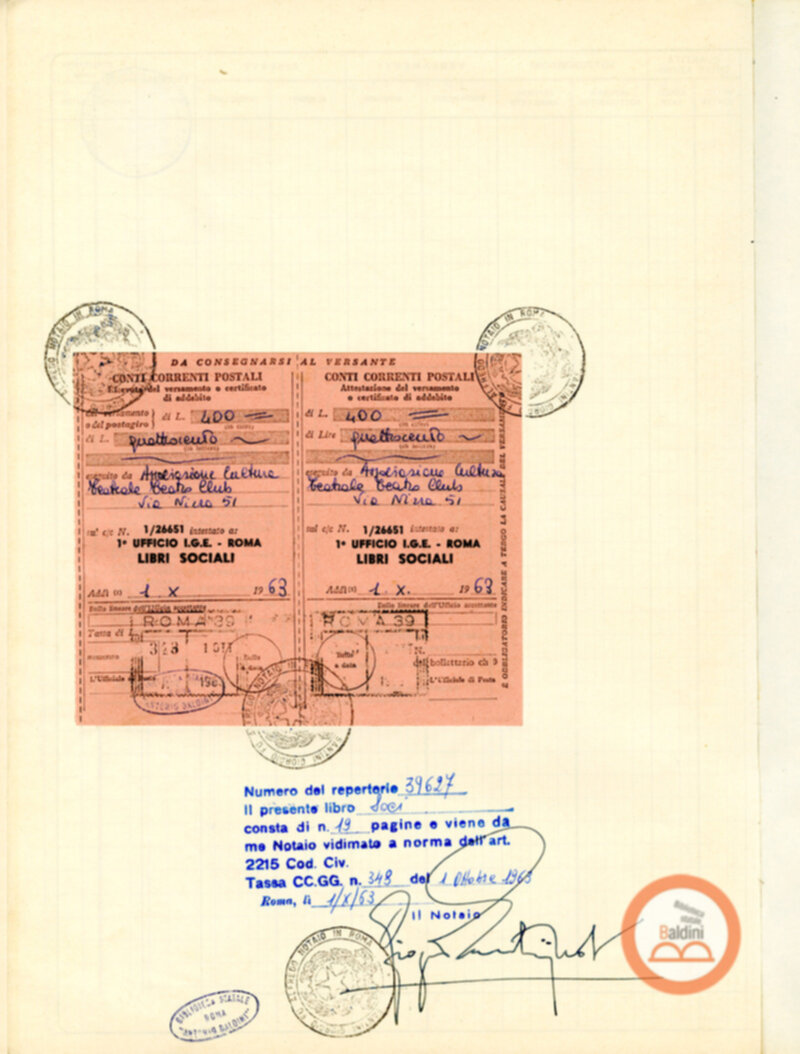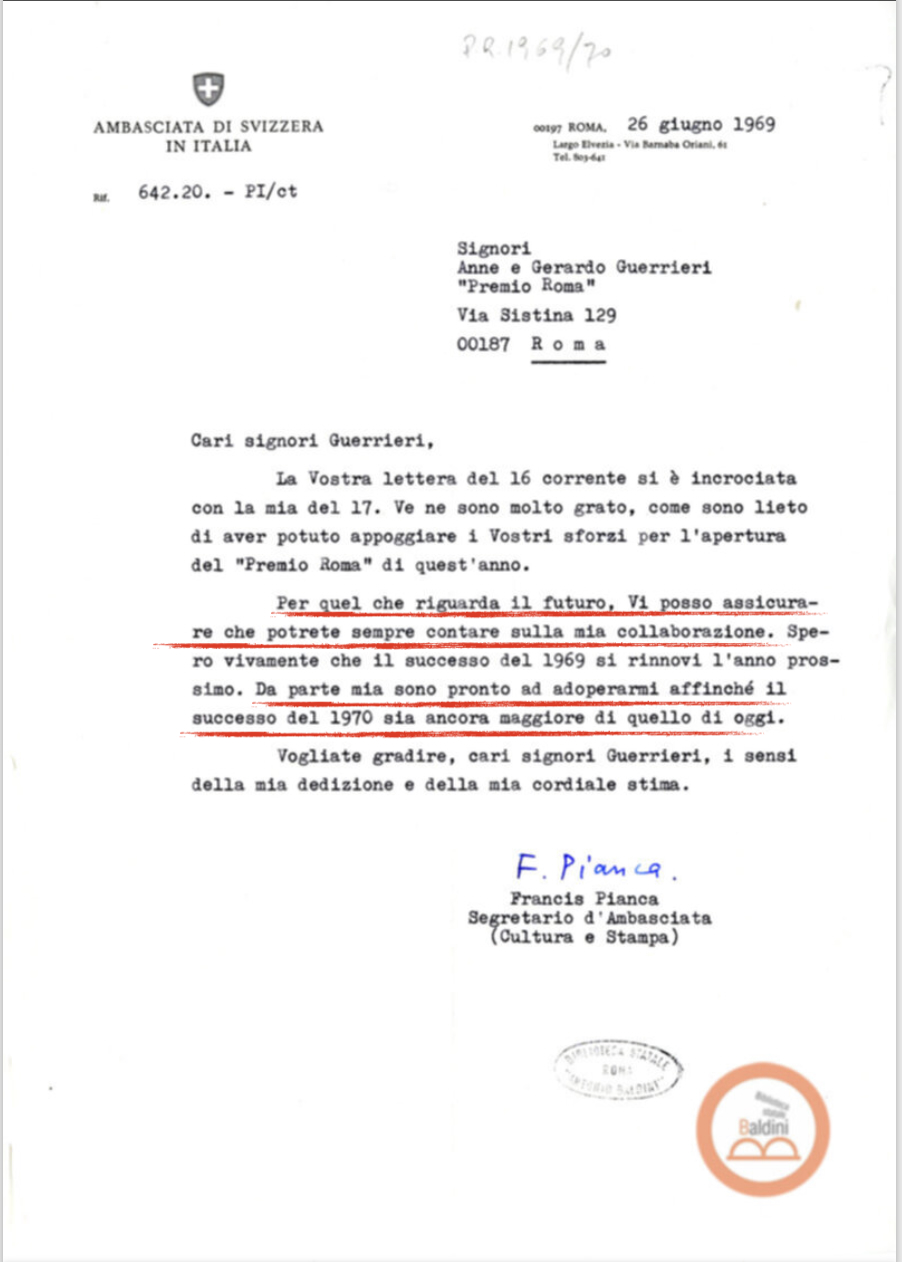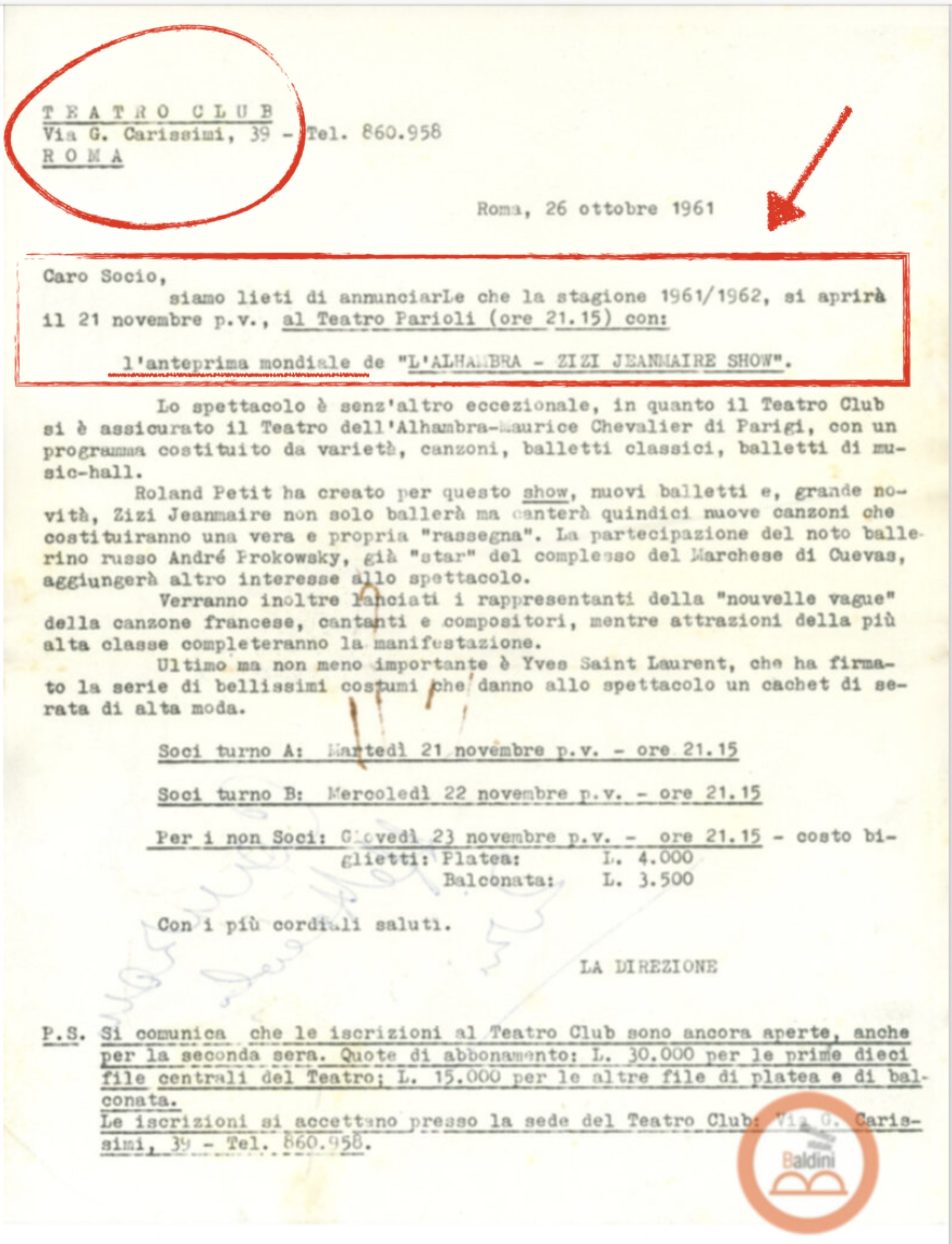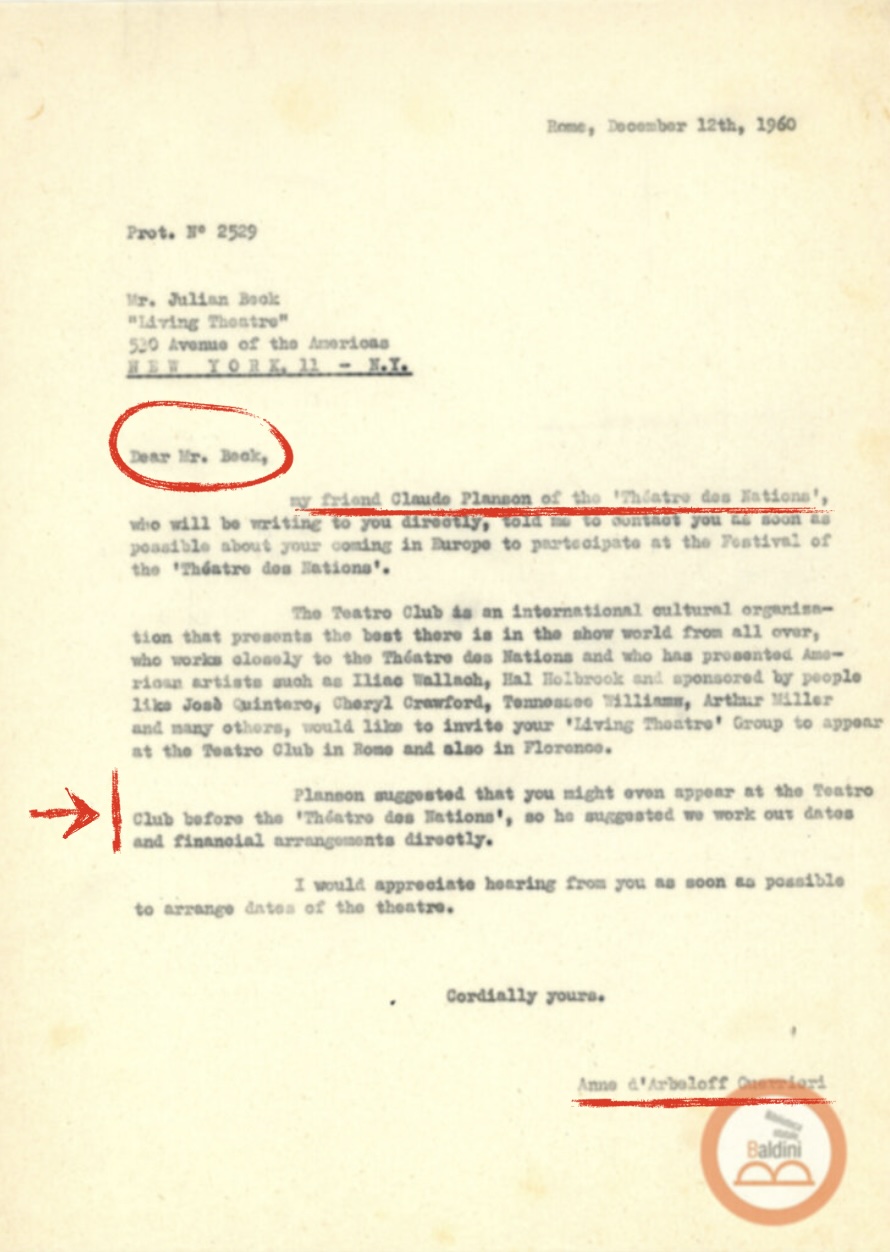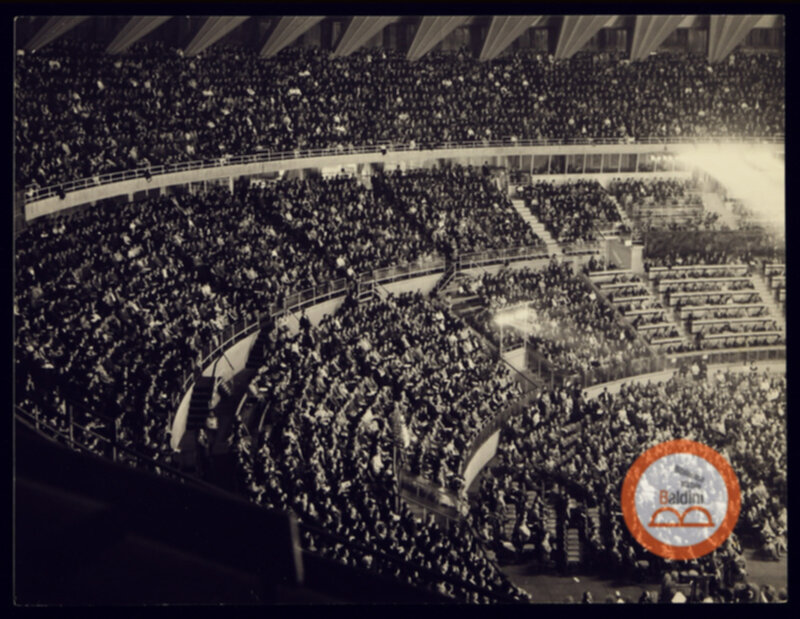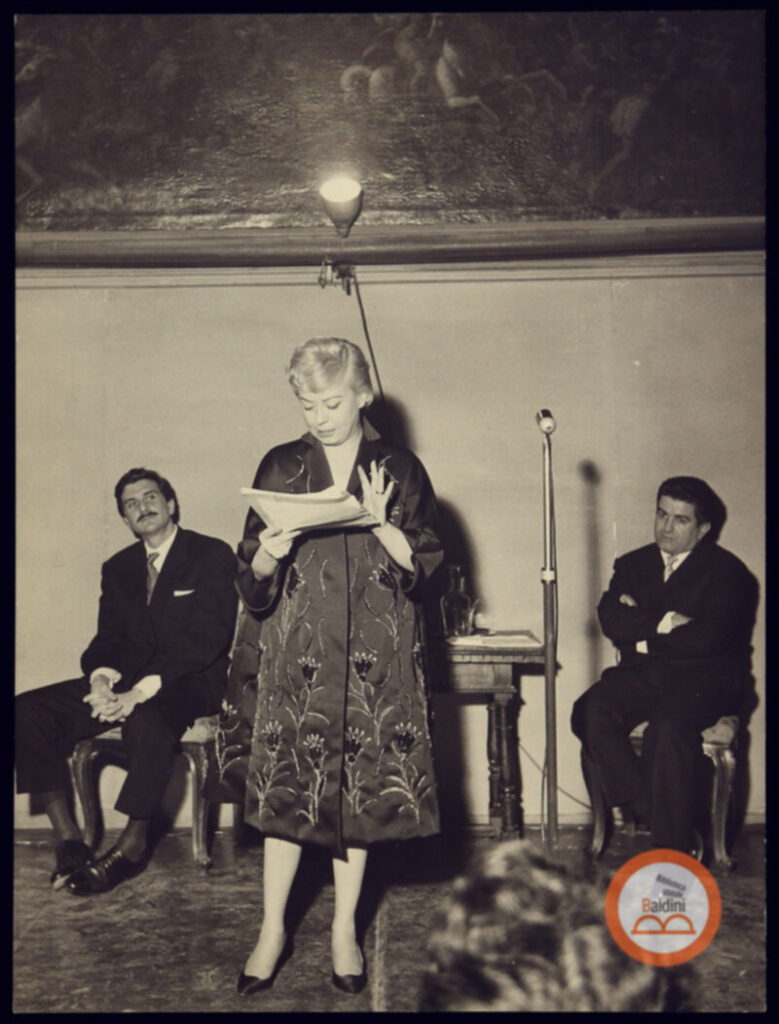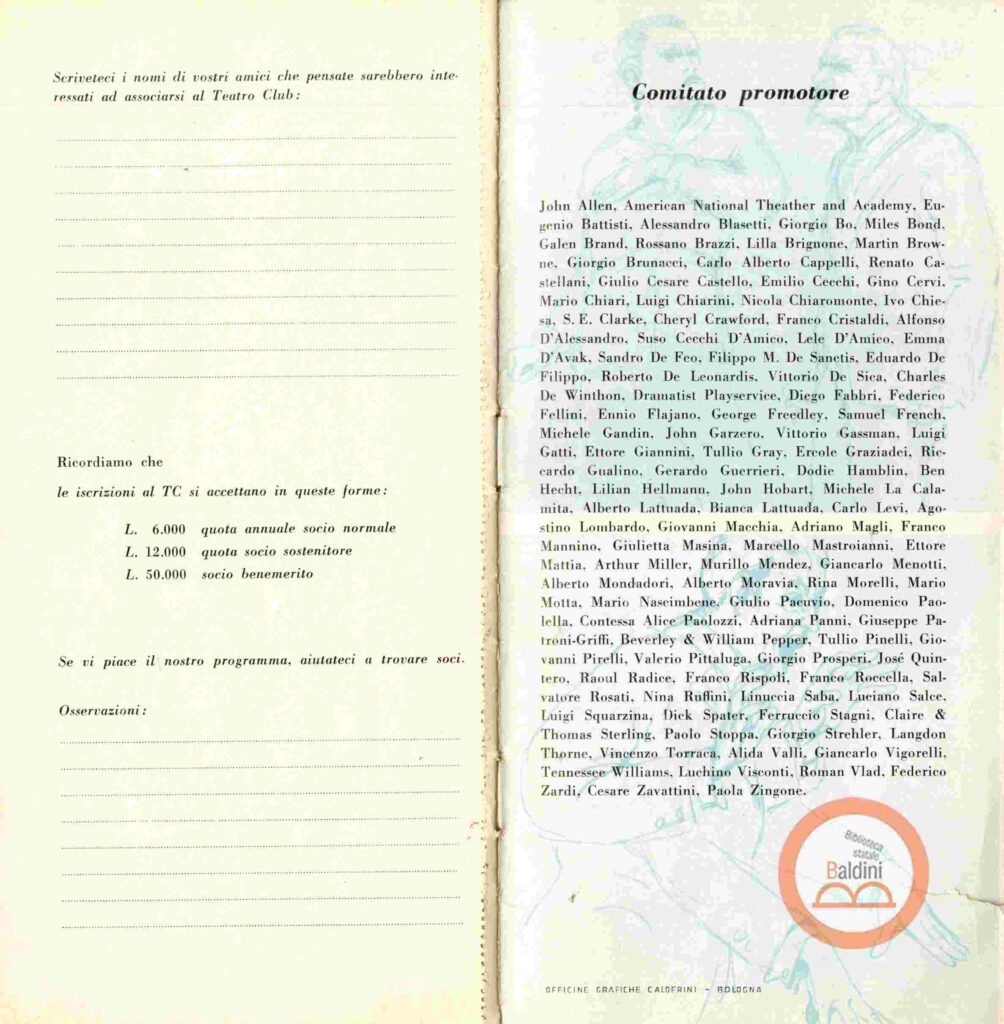virtual exhibit Stanza OTTO
WUNDERKAMMER
‘We want to tell of an era in which the boundaries between genres are collapsing and new forms are being announced: to propose a confrontation between tradition and innovation, between established values and new topics, to initiate a debate on the new themes that the poetry of the stage in all its forms is taking on in our time’. (Gerardo Guerrieri, Premio Roma ‘69 manifesto)
Speech to an associate sleeping in his armchair
This text belongs to the playbill of the Teatro Club in the year 1957. The ironic pamphlet, with an evocative title "Speech to an associate sleeping in his armchairis a sort of "statement of intent" to make Rome a European capital of theatre, like London, Paris, Berlin.
Gallery 1: Chansonnier
Giulietta Masina had known Gerardo Guerrieri since 1940 when he was a director in the experimental theatre of the Fascist university group in Rome, and she was a young actress making her debut with The Happy Journey to Trenton and Camden by Thornton Wilder. The photo depicts an evening dedicated to Eugene Ionesco, which took place on April 20 1958 at the Teatro Quirino in Rome with the participation of renowned men and women belonging to the world of theatre.
In order to give birth to the unprecedented initiative Teatro Club Gerardo Guerrieri and Anne d'Arbeloff gathered the most well-known stage people with whom they had close working relationships and friendships. Their initiative was intended to create new viewers, going beyond the logic of enlarging the general theatre audience.
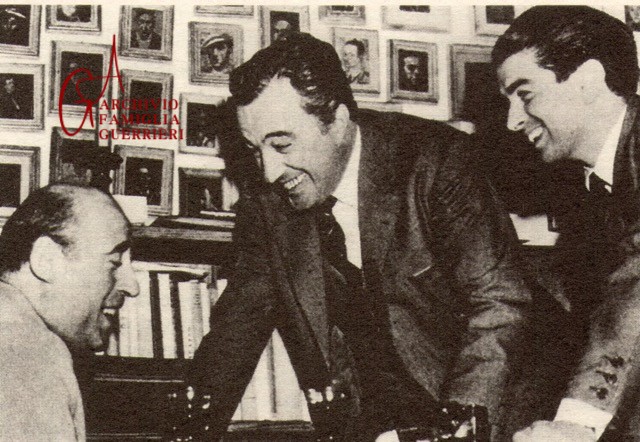

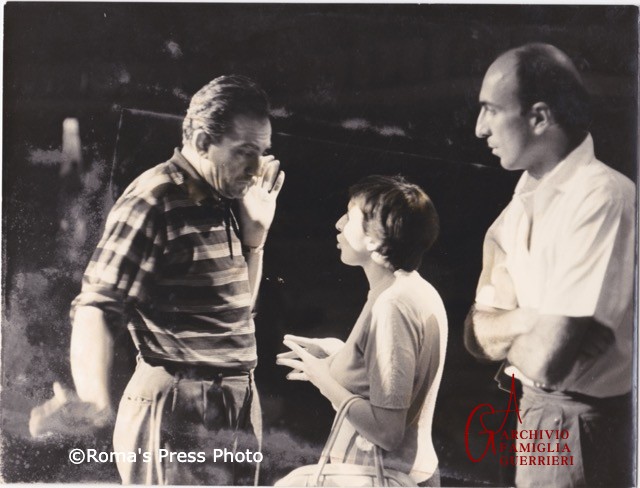
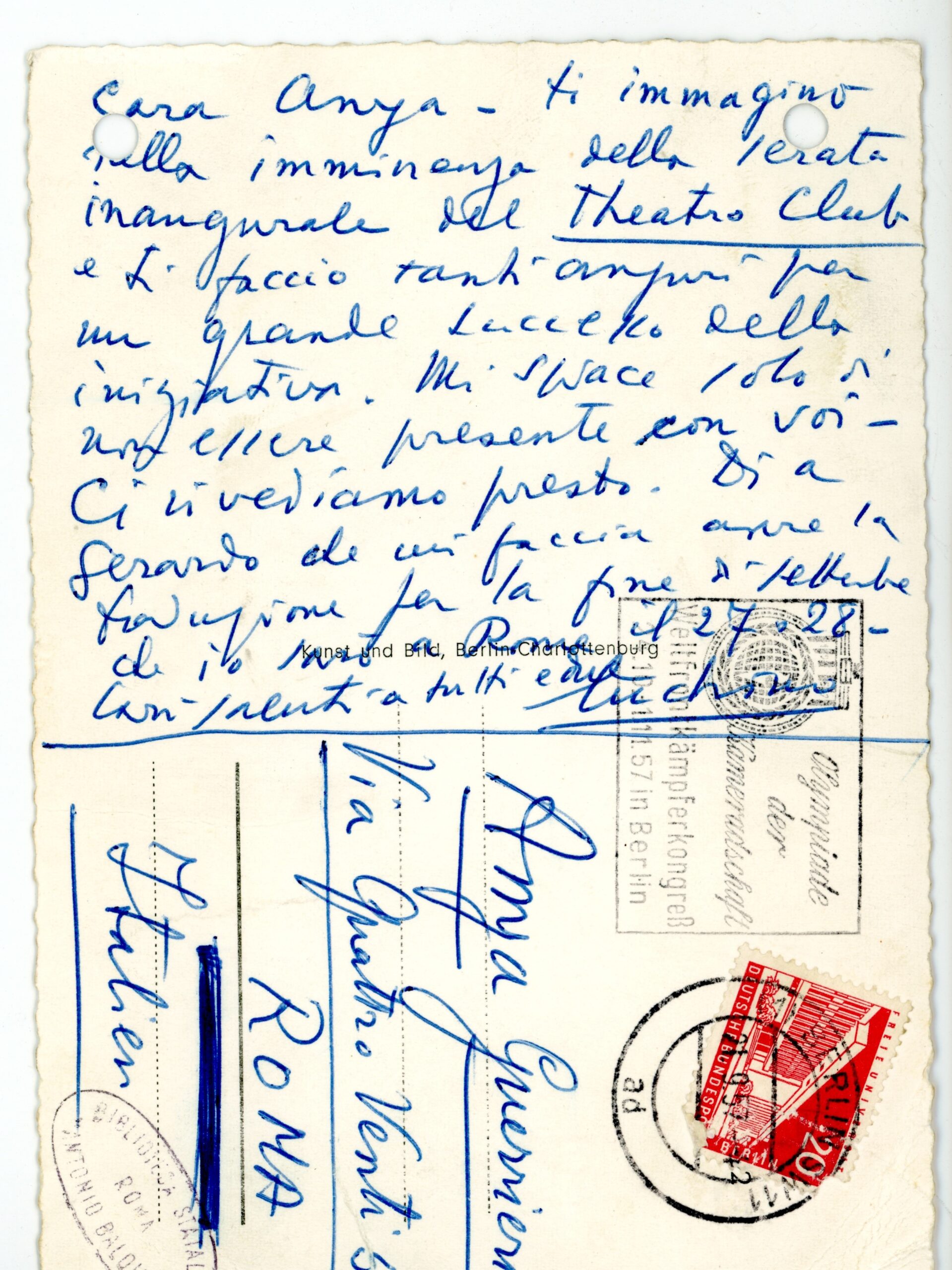
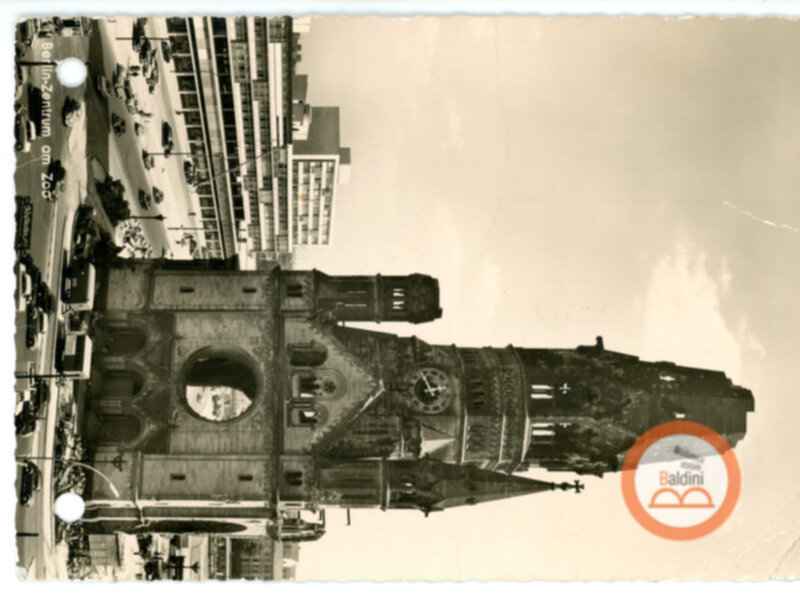
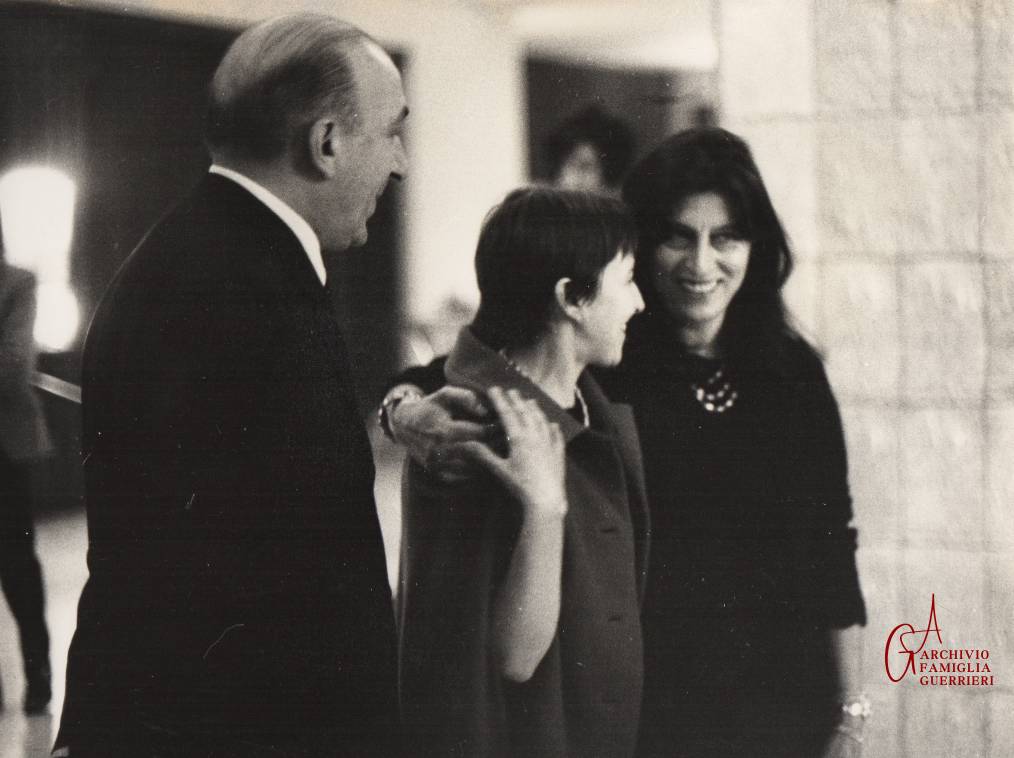
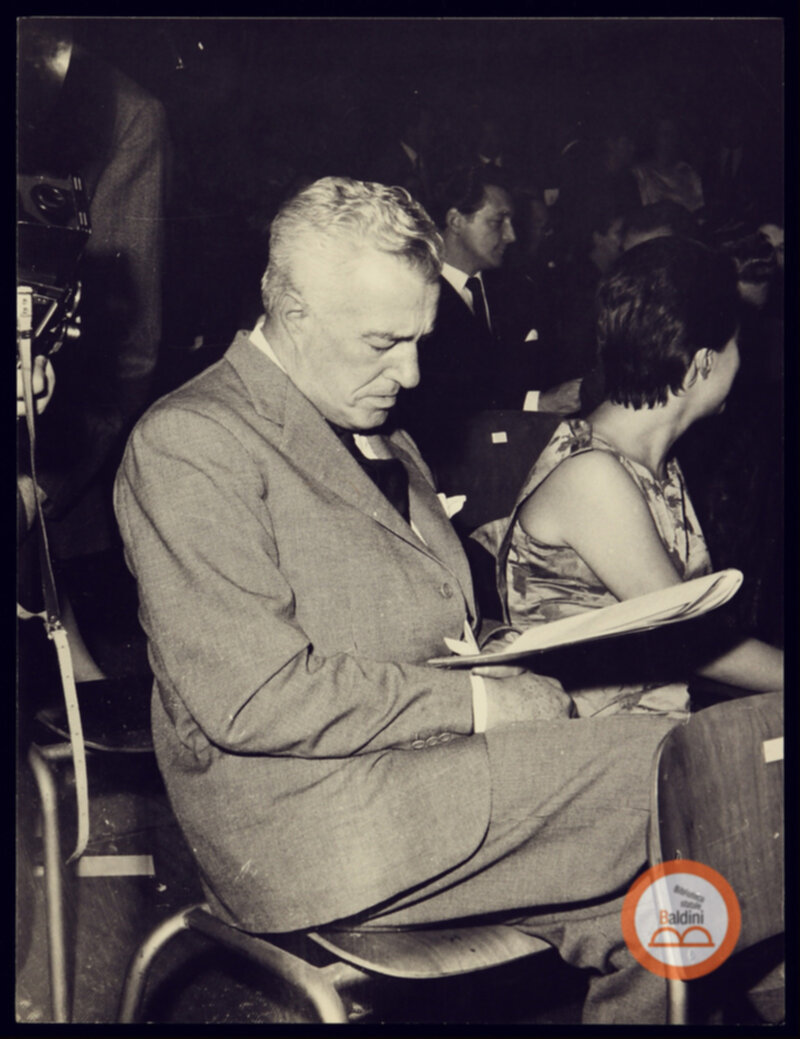







Gallery 2: Musica e teatro
List of members of the promotional Committee Teatro Club in the Teatro Club first playbill. Vi figurano nomi illustri del mondo dello spettacolo e della cultura, amici e sostenitori del progetto. Nella pagina accanto compare un’altra delle invenzioni del Teatro Club
The most ambitious goal of Teatro Club, to create dialogues and relations between the theatrical realities of European and non-European countries, was faced with the scarcity of economic resources. To overcome this obstacle, Anne and Gerardo adopted strategies that were quite unusual at the time: the decision to address the channels of cultural exchanges supported by foreign embassies and cultural institutes, and the focus on the process of producing performances. Thus were born lecture-performances, recital-collages, initiatives that were unknown at the time.
